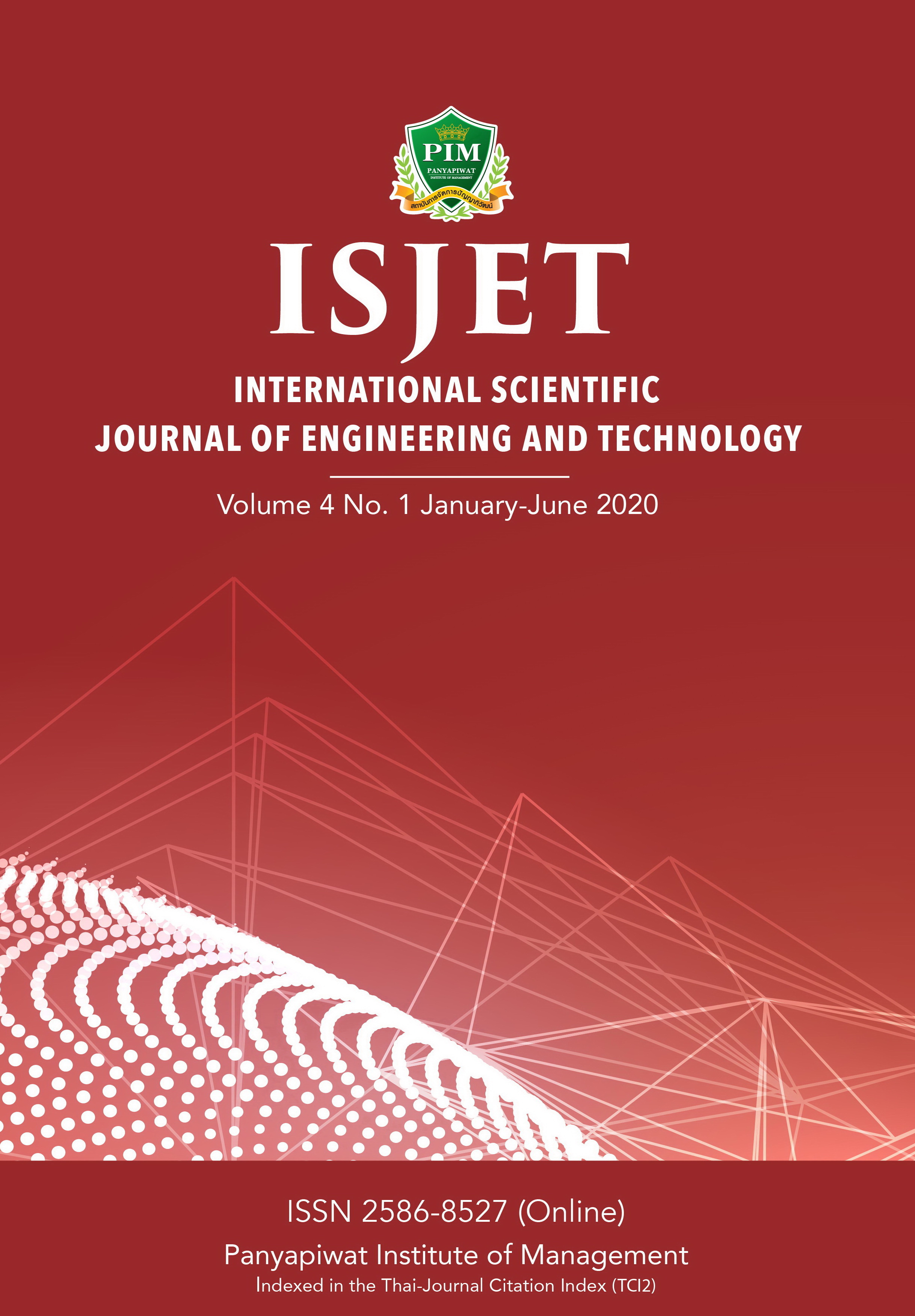Impact of Electric Vehicles and Solar PV on Future Thailand’s Electricity Daily Demand
Main Article Content
Abstract
Abstract—In the next few decades, solar PV and electric vehicles (EVs) will become a major potion in Thailand’s power system. In this paper, we aim to study the impact of future solar PV installation and EV charging on Thailand’s power system and to provide the efficient load demand management policy. Firstly, the future power load demand, solar PV installation, and the number of EVs are forecasted by ARIMA models. Next, various scenarios of EV charging demand are generated by varying the charging schedule which is controlled by a smart grid system and charging policy. Future load demand curve in each EV charging scenario is analyzed based on demand response and the effect to electricity power producer is discussed.
Article Details
เนื้อหาข้อมูล
References
P. Sundarajumpaka. (2018). Thailand Solar PV Policy Paper 1/2018, Deutsche Gesellschaft für Internationale Zusammenarbeit, Germany. [Online]. Available: http://www.thai-german cooperation.info/admin/uploads/publication/55b1dd37323b0e40b63b2853f260a831en
W. Pannakkong, P. Saophan, R. Chaysiri, J. Tang, J. Buddhakulsomsiri, P. Parthanadee, C. Jeenanunta, and H. Vitharana. “Forecasting solar power for self-consumption of households in Thailand using system dynamics model,” in Proceedings of the 23rd Asia-Pacific Decision Science Institute International Conference-APDSI, 2018, pp. 264-271.
C. Maitreesorasunte, J. Tang, R. Chaysiri, C. Jeenanunta, W. Pannakkong, H. Vitharana, and P. Parthanadee. “Forecasting self-consumption solar power capacity of industry and business sector in Thailand: a system dynamic model,” in Proceedings of the 2nd International Conference on Engineering Innovation, 2018, pp. 111-116.
A. Mellit, M. Benghanem, and S. A. Kalogirou. “An adaptive wavelet-network model for forecasting daily total solar-radiation,” Applied Energy, vol. 83, no. 7, pp. 705-722, July. 2006.
C. Chen, S. Duan, T. Cai, and B. Liu. “Online 24-h solar power forecasting based on weather type classification using artificial neural network,” Solar energy, vol. 85, no. 11, pp. 2856-2870, 2011.
R. Perez, M. Taylor, T. Hoff, and J. Ross. “Reaching Consensus in the Definition of Photovoltaics Capacity Credit in the USA: A Practical Application of Satellite-Derived Solar Resource Data,”IEEE Journal of Selected Topics in Applied Earth Observations and Remote Sensing, vol. 1, no. 1, pp. 28-33, 2008.
G. J. Osório, J. M. Lujano-Rojas, J. C. O. Matias, and J. P. S. Catalão. “A new scenario generation-based method to solve the unit commitment problem with high penetration of renewable energies,”International Journal of Electrical Power & Energy Systems, vol. 64, pp. 1063-1072, 2015.
S. Kaewpasuk, B. Intiyot, and C. Jeenanunta. “Stochastic unit commitment model for power system with renewable energy,” in Proceeding of 2017 International Electrical Engineering Congress (iEECON), 2017, pp. 257-260.
C. Liu, A. Botterud, Z. Zhou, and P. Du. “Fuzzy energy and reserve co-optimization with high penetration of renewable energy,” IEEE Transactions on Sustainable Energy, vol. 8, no. 2, pp. 782-791, 2017.
IEA. (2018). Global EV Outlook 2018: Towards cross electrification. IEA. France. [Online]. Available: https://webstore.iea.org/download/direct/1045?fileName=Global_EV_Outlook_2018
D. Hurley, P. Peterson, and M. Whited. (2013). Synapse energy economics. USA. [Online]. Available: https://www.synapse-energy.com/project/demand-response-power-system-resource
K. Qian, C. Zhou, M. Allan, and Y. Yuan. “Load model for prediction of electric vehicle charging demand,” in Proc. International Conference on Power System Technology, 2010, pp. 1-6.
P. Vithayasrichareon, G. Mills,andI. MacGill. “Impact of Electric Vehicles and Solar PV on Future Generation Portfolio Investment,”IEEE Transactions on Sustainable Energy, vol. 6, no. 3, pp. 899–908, 2015.
Z. Yang, K. Li, Q. Niu, and Y. Xue. “A comprehensive study of economic unit commitment of power systems integrating various renewable generations and plug-in electric vehicles,” Energy Conversion and Management, vol. 132, pp. 460–481, 2017.
T. Nguvauva, and S. Kittipiyakul. “Maximum Utilization ofAllocated Power for Scheduling of Smart Home Appliances,” in Proc. ECTI-CON. 2018.
Fraunhofer Institute for Solar Energy Systems. (2018). “Photovoltaics Report,” Fraunhofer Institute, Germany.[Online].Available: https://www.ise.fraunhofer.de/content/dam/ise/de/documents/publications/studies/Photovoltaics-Report.pdf
Electricity Generating Authority of Thailand, Metropolitan Electricity Authority, and Provincial Electricity Authority. (2016). “Summary report: Thailand’s electrical power system development plan for supporting electric vehicles,” Thailand. [Online]. Available: http://www.mea.or.th/profile/3253
Alternative Fuels Data Center. (2016). “U.S. Plug-in Electric Vehicle Sales by Model,” USA. [Online]. Available: https://www.afdc.energy.gov/data/


